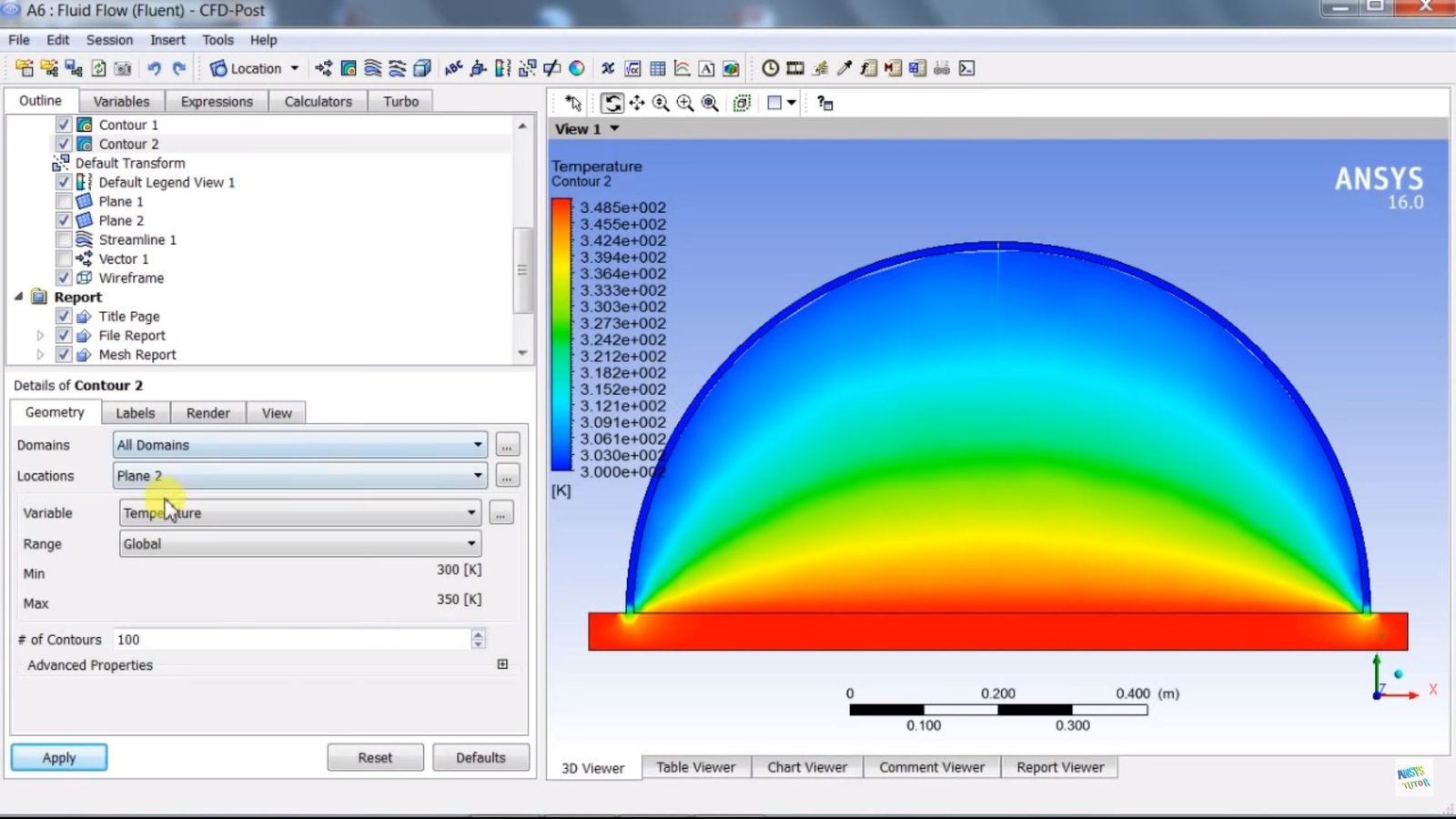
Select First Order Airy from the Wave Theory drop-down list. (d) Click Multiphase Tab and set the input values Enter 2% for Turbulence Intensity and 2 for Turbulent Viscosity Ratio. Select Intensity and Viscosity Ratio from the Specification Method drop-downlist. Enter 0 for Z-Component of Flow Direction. Enter 0 for Y-Component of Flow Direction. Enter 1 for X-Component of Flow Direction. Enter 1.5 for Uniform Flow Velocity Magnitude. Select Absolute from the Reference Frame drop-down list. Select Direction Vector from the Flow Direction Specification Method drop-down list. (c) Click Momentum Tab and set the input values Define the boundary conditions for up-inlet.īoundary Conditions up-inlet(a) Ensure that mixture is selected from the Phase drop-down list and click Edit. Similarly, define the secondary phase, water.ġ. (b) Select air from the Phase Material drop-down list.Ģ. Click Change/Create and close the Create/Edit Materials dialog box.

Copy water-liquid (h2o) from the FLUENT Database.ģ. The compilationis displayed in the console.Ģ. Click OK.ĪNSYS FLUENT sets up the folder structure and compiles the code. Select six dof property.c in the Select File dialog box.ĪNSYS FLUENT displays a Warning dialog box warning you to ensure that the UDFsource files are in the same folder that contains the case and data files. (d) Click OK to close the Multiphase Model dialog box.ĭefine User-Defined Functions Compiled.Ģ. (c) Enable Implicit Body Force in the Body Force Formulation group box. (b) Enable Implicit in the Scheme group box. (a) Ensure that Number of Eulerian Phases is set to 2. Models Multiphase Edit.(a) Select Volume of Fluid from the Model list to open Multiphase Model dialog box. Make sure the minimum volume reported is a positive number. General Transient(a) Select Transient from the Time list.ĪNSYS FLUENT will perform various checks on the mesh and will report the progressin the console. Read the mesh file ().įile Read Mesh.As the mesh file is read, ANSYS FLUENT will report the progress in the console. Therefore, after you read in the mesh, itwill be displayed in the embedded graphics window.ġ. The Display Options are enabled by default. If the UDF Compiler tab does not appear in the FLUENT Launcher dialog box by default,click the Show Additional Options > button to view the additional settings. bat file which is required to compile the UDF will be displayed as soonas you enable Setup Compilation Environment for UDF. Click the UDF Compiler tab and ensure that the Setup Compilation Environment forUDF is enabled.

Enable Double-Precision in the Options list.ĥ. Use FLUENT Launcher to start the 3D double precision version of ANSYS FLUENT.įor more information about FLUENT Launcher see Section 1.1.2 StartingANSYS FLUENT Using FLUENT Launcher in ANSYS FLUENT 13.0 Users Guide.Ĥ. Create a subfolder (tiff-files) to store the tiff files for postprocessing purpose.ģ. Copy the files () to your working folder.Ģ.

Flow is goingalong +X direction and Y axis is the lateral axis.ġ.
Ansys fluent tutorials free#
For this problem geometry iscreated such that Z axis is the vertical axis and z=0 is the free surface level. Water bottom level is at 2.75m below free surface level. Tutorial: Heave and Pitch Simulation of Ship hull moving through head sea waves The problem considers incoming flow at 1.5 m/sec with wave specification as follows: The problem is to model heave andpitch motion of ship hull going through the head see waves. The schematic of the problem is shown in Figure 1. If you havenot used these models before, see Sections 11.6 Using Dynamic Meshes and Section 11.6.4Six DOF Solver Settings, respectively in the ANSYS FLUENT 13.0 Users Guide. In this tutorial, you will use the dynamic mesh model and the 6DOF model. Some steps in the setup and solution procedure willnot be shown explicitly. This tutorial is written with the assumption that you have completed Tutorial 1 fromANSYS FLUENT 13.0 Tutorial Guide, and that you are familiar with the ANSYS FLUENTnavigation pane and menu structure. Restrict 4 degree of motions out of 6 degree using User Defined Function (UDF) Postprocess the resulting data. Use dynamic mesh six-dof feature to model motion of the hull. Use Numerical Beach option to suppress the numerical reflection near the outlet. Use open channel wave boundary condition to generate shallow waves. Use VOF multiphase model of Fluent to solve open channel flow.

Ansys fluent tutorials how to#
This tutorial demonstrates how to do the following: In this tutorial a wigleyhull heave and pitch motion is simulated in head sea waves. Ships moving through head sea waves predominantly encounter heave and pitch motionswhile the other four motions (roll, yaw, surge, sway) are negligible. Tutorial: Heave and Pitch Simulation of Ship hull moving


 0 kommentar(er)
0 kommentar(er)
